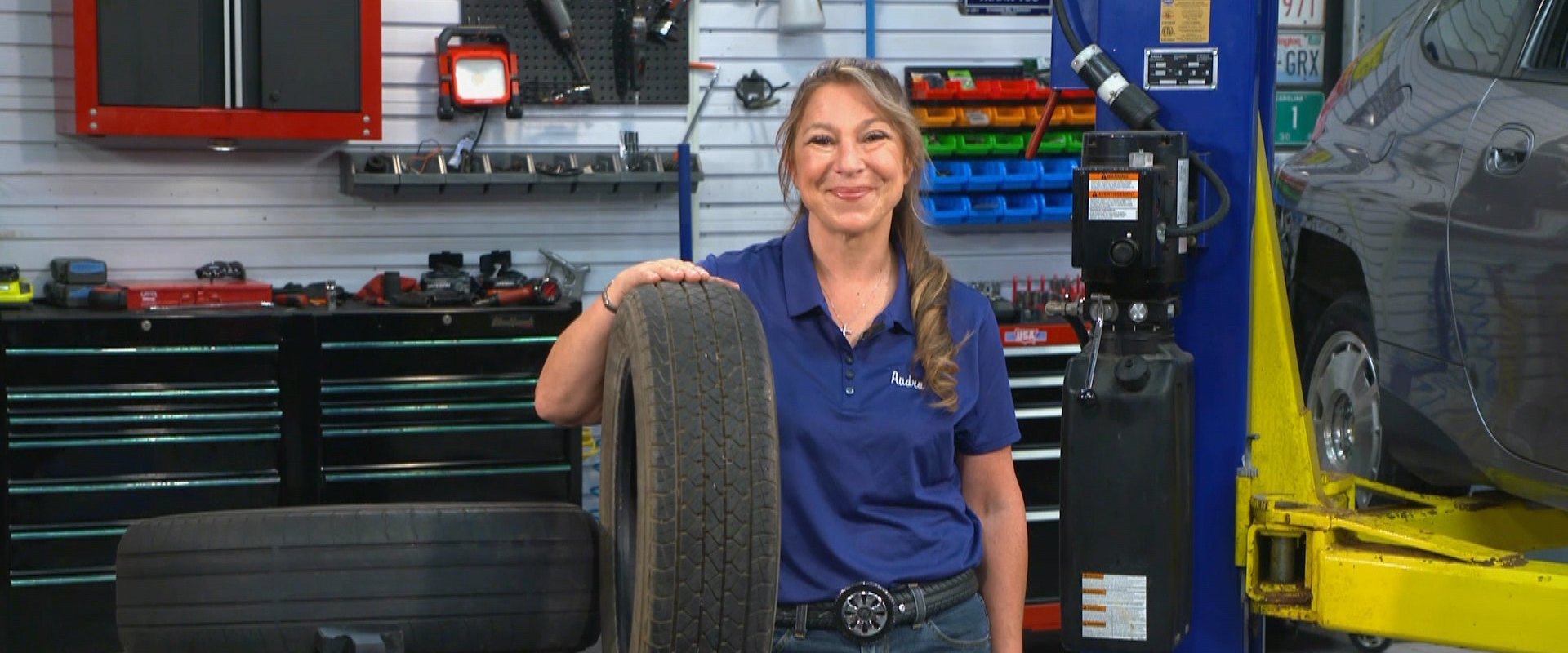Hydroplaning Tire Tips
Wet roads can mean big unexpected trouble. We’re talking about hydroplaning. But a good set of tires can go a long way in keeping a grip on that situation. So, we brought in Audra Fordin to help us tread safely in the wet on MotorWeek’s “Your Drive.”
AUDRA FORDIN: With each passing mile, little bits of your tires are left behind, it’s like the treads are gradually being sanded down. And as your tires wear down more and more, you may start to notice a slight loss of traction when you’re on the gas pedal or stopping, and if your tires get bad enough, you might even experience hydroplaning.
I like to think of hydroplaning as “water skiing on the road” because hydroplaning happens when forces your tires to lose grip to the ground, and it feels like you’re sliding on ice, and have like little to no control over your vehicle. It’s not good, it’s not fun. Now, if this happens to you, take your foot off the gas pedal to transfer the car’s weight forward, and do not slam on your brakes, because this can cause you to spin out. Do ease onto the brake pedal and try to stay calm and not to panic. You will be back in control in just a few seconds.

My best advice is to prevent hydroplaning in the first place. Yes, of course this means driving safely, but it also means having good tires.
Remember how I mentioned the tire treads? One of the main purposes of the treads on your tire is to channel water out from under the tread making the contact patch as dry as possible. You can imagine as these channels get shallower, they become less effective. So your tires wear down, and the risk of your sliding goes up.
This is why it is vitally important to routinely check your tire tread depth. Now, you can see the tire tread depth by looking at the tread wear indicator bar in the sipes of the tires. Now, of course, using a proper tread depth tool, and note you should have more than 3/32nds of an inch of tread depth left, which is the minimum of an acceptable limit.
Now when it comes time to replace tires, I always recommend going new. The benefits of new tires include a longer lifespan, no fear of underlying damage, a warranty, and that gives you overall peace of mind.
This isn’t to knock used tires as a whole. But keep in mind that someone used them and removed them from their vehicle for a reason. Yes, there are reputable shops out there that will sell quality rubber. Just remember that, while you might save some cash at the moment, this is a short-term fix and you will be heading back to the shop sooner for a replacement.
When you’re looking at used tires, be sure to check the age of the tire – which is the D.O.T. code stamped onto the sidewall, that will tell you the month and year that the tire was made. this one says 4308, meaning it’s the 43rd week of 2008 when it was born. That’s really old!
Look at the sidewalls for any weird abnormalities. You’re going to look for any bulges, any tears, and any cracks. Also, be sure to look for any scuffs on the treads, cuts in the treads, and any melted ends on the tire.
Either way, be smart, play it safe, and keep your tires fresh! If you have any questions or comments…reach out to us, right here at MotorWeek!








